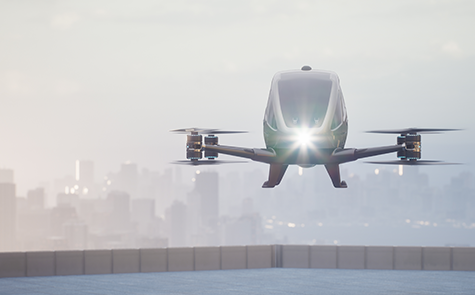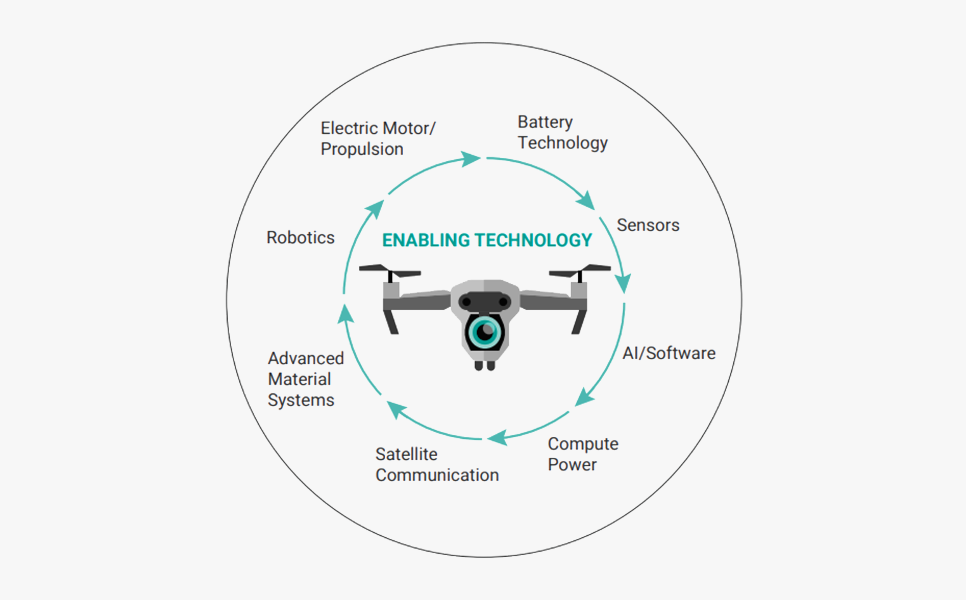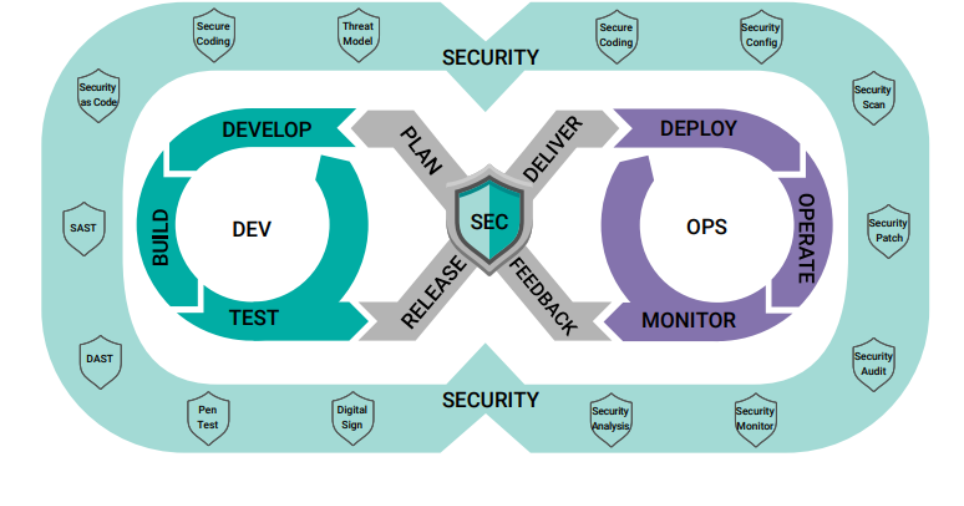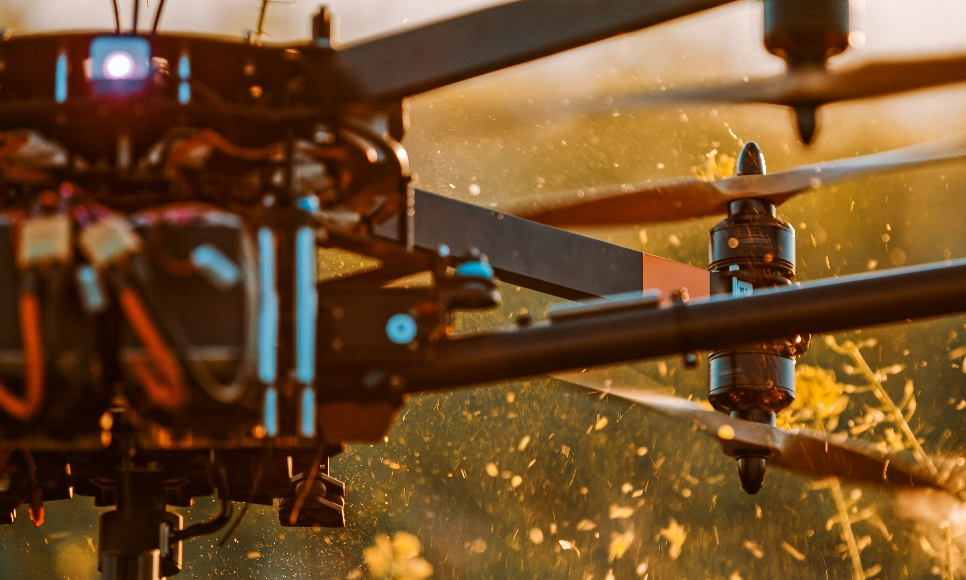What Is UAM?
Urban Air Mobility (UAM) is a term for aviation transportation systems that are highly automated. The ultimate vision of UAM is aircraft that can fly below typically approved altitudes and operate even within towns, cities, and suburbs.
Flying at these heights — in part to address the overcrowded ground transportation system — requires extensive awareness of the vehicle’s safety and environment. The UAM ecosystem comprises operation, airspace accessibility, urban/suburban development, and overall engagement with the vehicle’s surroundings.

UAM systems are designed to fly at low altitudes over almost any kind of terrain.
New Market Possibilities
Recent focus on autonomous systems has centered on transportation of passengers, packages, and disaster relief. New operators, such as Uber Elevate and Amazon Prime Air, have entered this market and joined established carriers such as Airbus, Bell, and Boeing. At the same time, automotive companies have broken into this space with a series of air taxi demonstrators, such as the Hyundai S-A1 unveiled at CES 2020. Start-ups are beginning to tap into support services and operations to unlock the value that lies beyond the hardware alone. Meanwhile, the U.S. Army and military prime contractors are developing their own autonomous systems, replacing or upgrading older programs and proposing performance enhancers for range, endurance, load, autonomy, cost, and complexity.
These devices that work together at the intelligent edge — the unmanned aircraft, the ground control stations, the Unmanned Aircraft System Traffic Management (UTM) coordinate system, and more — are fueled by software and services.
The Growing Role of Software
Over the course of the next two to three years, the AAM/UAM industry will undergo a significant transformation as it matures concepts into prototypes, subscale air vehicles into full-scale models, and manually operated systems into highly automated — and in some cases autonomous — ones.
As the market matures, software holds more value, especially for solutions that allow operators to adapt and evolve their designs to fit new missions and use cases. The goal is for an aircraft to be able to switch between tasks within a matter of hours.

Figure 1. Enabling technologies
What Is AAM?
Advanced Air Mobility (AAM) refers to the extension and expansion of UAM to take into consideration the whole aircraft, not only in urban areas but in a variety of use cases.
Takeoff and landing capabilities are critical to AAM. Electric vertical takeoff and landing (eVTOL) allows people and goods to move between locations in ways not possible using current transportation methods. However, technology challenges facing eVTOL include the design, development, safety, and security of the systems.
» View an eVTOL InfographicDevSecOps in UAM/AAM/eVTOL
An intelligent compute system is a major component of modern aviation technology. Its development relies on DevOps, which uses agile practices to support constant integration and delivery of new or updated code. In its latest evolution, DevSecOps further incorporates security into the intelligent software platform from the outset. Software developers need to plan for a system development lifecycle that incorporates:
- Investigation
- Analysis
- Design
- Build
- Testing
- Implementation
- Maintenance, support, and upgrades

Figure 2. DevSecOps adds security to familiar DevOps practices
DevSecOps tools help secure the development workflow, ensuring that systems are free of vulnerabilities and remain secure during operation. To incorporate agile software development into the production of automated aircraft and eVTOL systems, developers must build in software tools and technologies such as virtualization, containerization, orchestration, automation, commercial off-the-shelf (COTS) software, configuration management tools, and more. A constant flow of data via a digital feedback loop is imperative for the continuous updating, debugging, and improvement of the applications, systems, and operations of autonomous avionic systems.
UAM Study Key Findings
To discover more about strategic issues, use cases, and related trends in the UAM market, Wind River commissioned Endeavor Business Media to conduct a web-based survey. The study aimed to define some of the specific cybersecurity, safety, and subsystem development issues faced by companies currently conducting and/or planning Unmanned Aircraft Systems (UAS) programs. A select, prequalified list from the Military & Aerospace Electronics magazine database was used to recruit respondents for the survey, which was conducted between mid-June and early July 2019.

UAMs are increasingly part of the business strategy of governments and institutions.
First Use Cases
Government- and institution-based use cases are expected to lead in the UAM market, with transportation and data collection services likely to be the initial private sector-based applications.
- “Surveillance, ground traffic, and law enforcement operations” and “emergency medical evacuations, rescue operations, and humanitarian missions” are currently the most frequently mentioned UAM use cases.
- Respondents anticipate “monetizing transportation services” and “monetizing data collection services” to be the most successful business models, indicating that these will likely be the first use cases when the private sector enters the UAM market.
Early Stages
UAM is currently still in the early stages of development, although significant UAM programs are expected to be part of many responding organizations’ business strategies in the next one to three years.
- Only 11% of respondents’ organizations are currently at either the “prototype/fielding” or “deployment” stages of the development cycle for their most strategically important UAM programs.
- However, this situation is changing: Almost half of survey respondents (46%) said that UAM will be “a significant part of (their) organizations’ business strategy in the next one to three years.”
Key Challenges
Three issues constitute the top obstacles to the growth of the UAM market, although there are others as well.
- The biggest UAM hurdles identified by respondents are ensuring safety of the people on the ground and in the aircraft (73%), gaining public acceptance (53%), and complying with cybersecurity and safety certificates needed to operate in the national airspace (53%).
- Additional UAM challenges and/or opportunities identified via open-ended questions include subsystem development (e.g., AI, multiuse platforms, system reliability), regulations and standards for the UAM industry (e.g., operating agreements, command-and-control structure, integration with conventional air traffic), and addressing key business issues in the UAM market (e.g., competition with existing services, closing the profitability loop, liability of casualty events).
Aligning Around Standards
Cybersecurity and safety-standard compliance are considered key, although stronger consensus is still needed around specific standards within the UAM industry.
- While the most-mentioned cybersecurity standard is the ISO 27000 series, only 47% mentioned it; in addition, respondents still consider “certification/approval requirements” to be the most significant obstacle to organizational compliance (43% indicated).
- A majority (69%) of survey respondents feel that manned and unmanned urban aircraft should follow the same or similar safety procedures and certifications, although some feel the standards applicable toward unmanned aircraft should be more stringent. There is still limited consensus on what specific safety standards are applicable, with 40% or fewer respondents mentioning each of the primary two standards: “FAA Part 107” (40%) and “FAA Part 23/EASA CS-23” (37%).
- However, there is relatively strong consensus regarding COTS components, with 80% of respondents saying they are likely to use these. There is also a relatively strong preference (66%) that safety and security technology be “built into the software and/or hardware platforms.”
The Role of Applications
UAS subsystems play a key role in making the UAM market viable, with respondent preference for systems’ ability to run several applications at once and migrate existing applications to their current and/or next designs.
- According to 93% of respondents, unmanned aircraft subsystems need to be able to run several applications at the same time (e.g., navigation/GPS; collision avoidance).
- Key applications to consolidate or add include real time (71%), safety critical/certified (63%), and AI/machine learning (47%).
- Most respondents (83%) considered the ability to “migrate existing applications to (their) current/next design” as at least “somewhat important.”
- The most preferred OS is “some form of Linux” (61% mentioned one of 7+ choices), followed by Google® Android® (36%) and Microsoft® Windows® (33%). Hardware/processor preferences include Intel® Xeon®, Core™ i5/i7, and Atom® (62% mentioned), as well as Arm® Cortex A5x, A7x, and R5x (40%).
How Can Wind River Help?
Wind River Studio
For aerospace and defense development teams that are modernizing or transforming the development, deployment, and operation of their intelligent systems, Wind River® Studio provides secure collaboration at the intelligent edge. Studio is architected to easily scale and simultaneously run different projects with multiple OSes and hardware architectures, all from a single pane of glass.
» Learn More
The Studio cloud-native toolset supports teams in collaborating across the intelligent edge.
RTOS
Studio’s market-leading real-time operating system, powered by VxWorks®, supports containers for app deployment (and is the first and only RTOS to do so), as well as C++17, Boost, Rust, Python, and more. VxWorks enables lower procurement and certification costs while meeting stringent industry standards such as DO-178C, IEC 61508, ISO 26262, ARINC 653, POSIX®, and FACE™, with commercial off-the-shelf (COTS) standards conformance and safety certification evidence.
» Learn MoreLINUX OS
For mission-critical applications, Studio’s Linux OS powered by Wind River Linux delivers military grade Linux with a combination of system-level security reinforcements, such as access control mechanisms and intrusion detection and prevention tools, and long-term security update strategies for deployed devices. With validated, maintained, and supported source code, as well as a comprehensive suite of services including CVE monitoring, Wind River Linux is certified for ISO 9001 and for conformance to the FACE Technical Standard as an Operating System Segment (OSS) that supports the General Purpose Profile (GPP).
» Learn MoreVIRTUALIZED OS PLATFORM
Studio’s virtualization solution, powered by Wind River Helix™ Virtualization Platform and based on the industry-leading VxWorks 653, consolidates and separates multi-OS and mixed-criticality apps on a single platform. Simplify, secure, and future-proof your aerospace and defense systems.
» Learn MoreSIMULATION
To reduce risk and speed time-to-market, Studio simulation powered by Wind River Simics® allows you to create digital twins of complex systems and run virtual cyber tests, including pen testing. Enable agile practices throughout your product’s lifecycle with system simulation and automation technologies.
» Learn MoreSupport for Industry Standards
Wind River makes it easier and more cost-effective for technology suppliers to meet the stringent requirements of the aerospace and defense industries, with support for industry standards such as ARINC 653, FACE, RTCA DO-178B and DO-178C, IEC 61508, POSIX, and more.
» Learn More